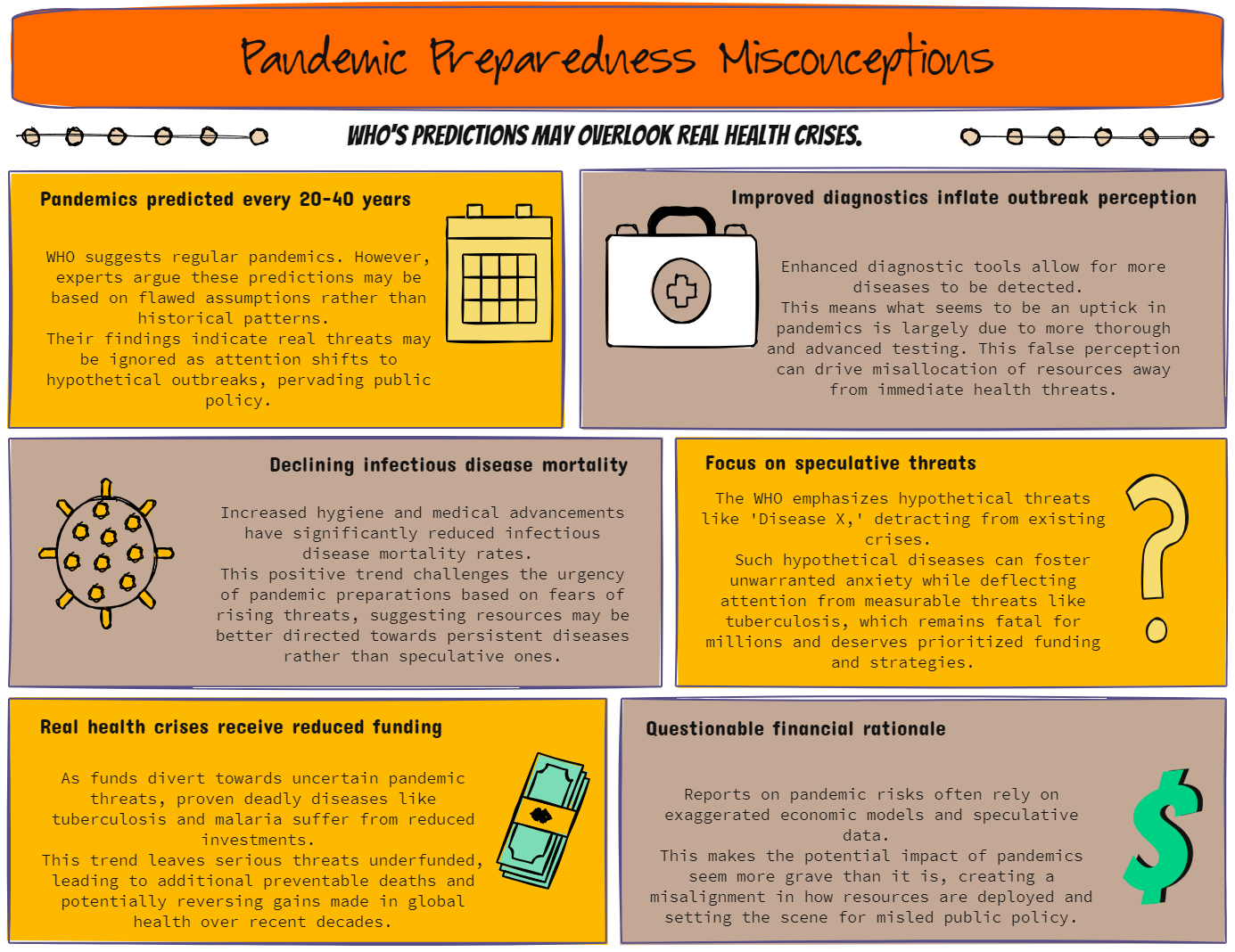The World Health Organization claims pandemics now every 20 to 40 years
The World Health Organization (WHO) claims that pandemics—once considered rare—are now expected every 20 to 40 years. This alarming prediction has fuelled billions in funding for pandemic preparedness, with the WHO leading the charge.
But what if this narrative is built on flawed assumptions?
Research - Reevaluating the Pandemic Preparedness and Response Agenda (REPPARE) - reveals that the WHO’s warnings about rising pandemic frequency are misleading.

Experts Professor Garrett Brown and Dr. David Bell from the University of Leeds challenge this narrative in their research, "Reevaluating the Pandemic Preparedness and Response Agenda (REPPARE)."
They argue that the perceived increase in pandemics stems from better diagnostic tools detecting more diseases, not an actual rise in frequency, while infectious disease deaths have declined due to improved hygiene, healthcare, and nutrition. They criticize the WHO’s focus on "Disease X," a hypothetical future pathogen, as speculative and fear-driven, lacking evidence of catastrophic impact from known threats. This emphasis, they contend, diverts resources from pressing, treatable diseases like tuberculosis (1.3 million deaths yearly) and malaria (over 600,000 deaths, mostly children), which suffer from reduced funding as pandemic preparedness takes priority. Financial justifications for this shift, based on G20 reports, rely on shaky data and inflated economic models, exaggerating pandemic costs.
Brown and Bell warn that prioritizing hypothetical threats over real, manageable health crises is misguided and dangerous. Redirecting even a portion of pandemic funds could save millions from known diseases, suggesting the true risk lies in neglecting preventable and treatable illnesses, not an impending "big pandemic."
Read More
